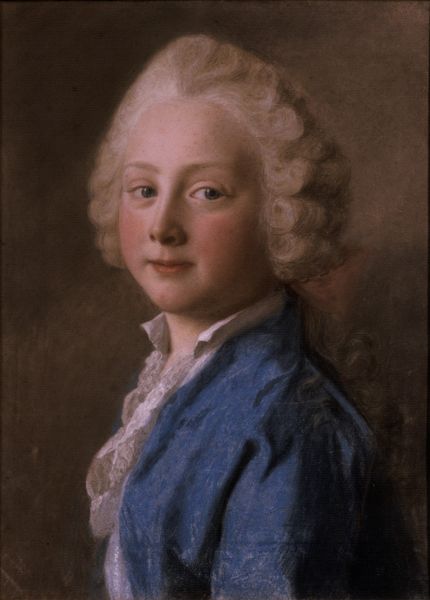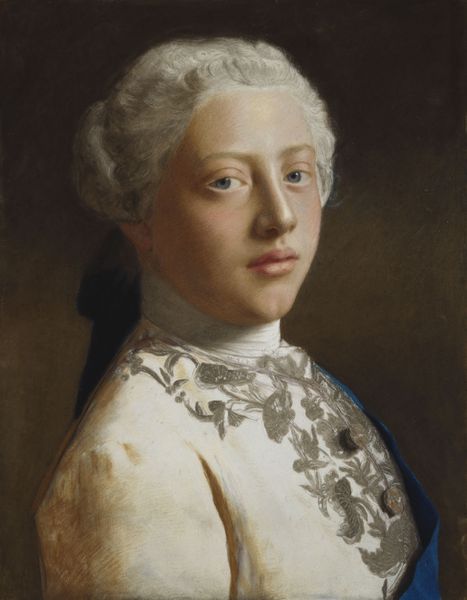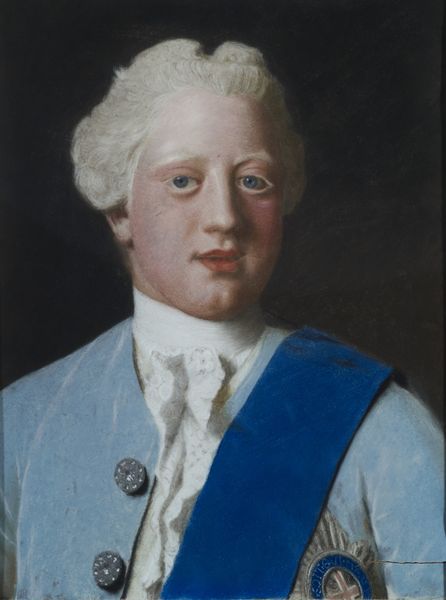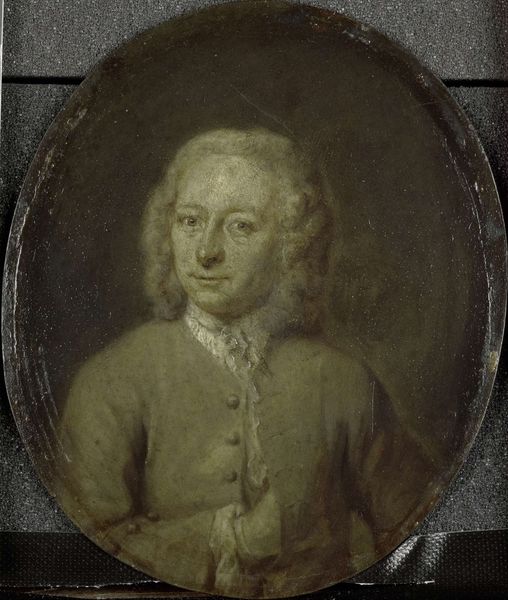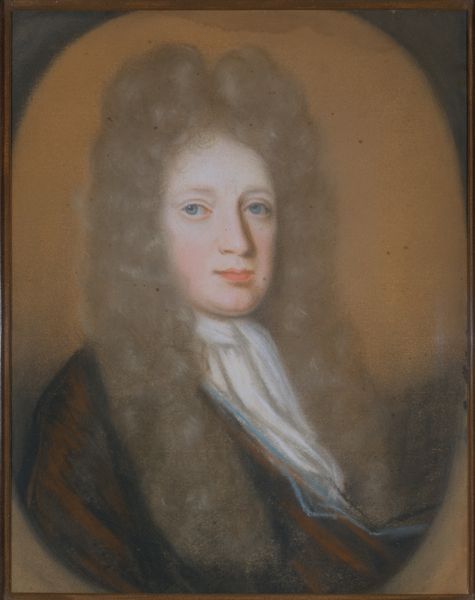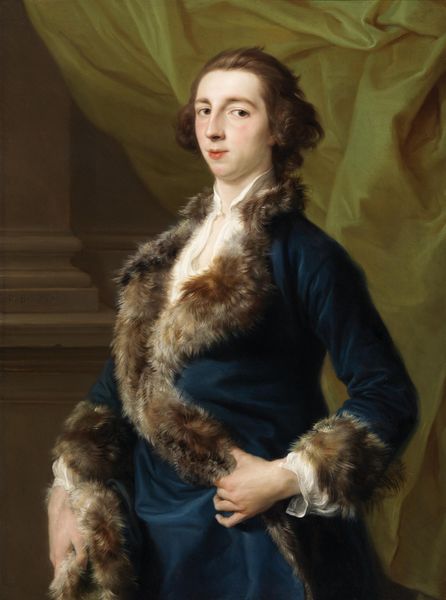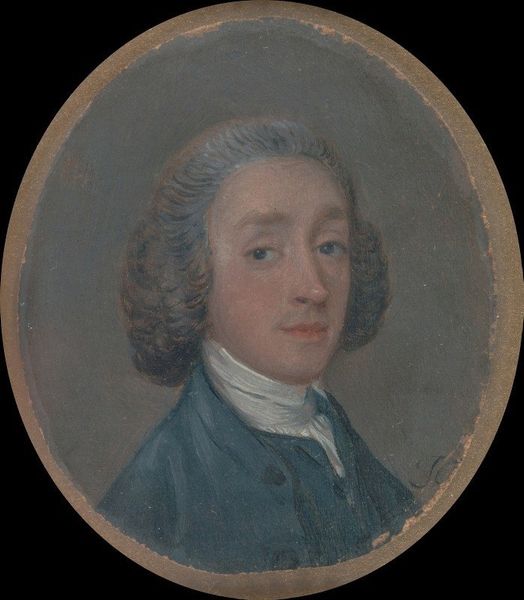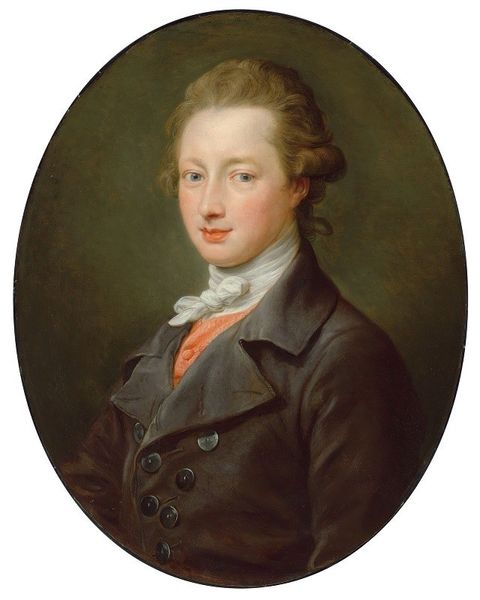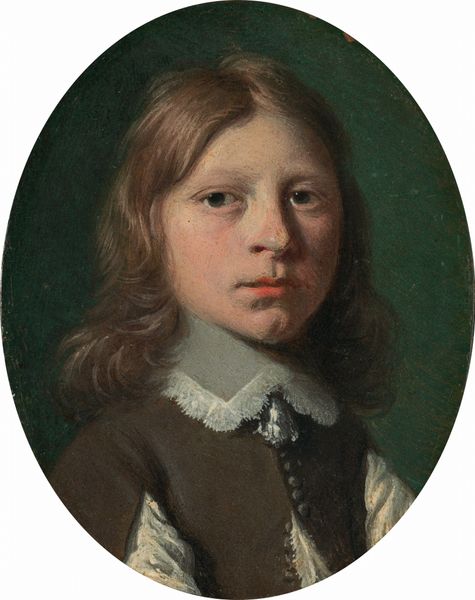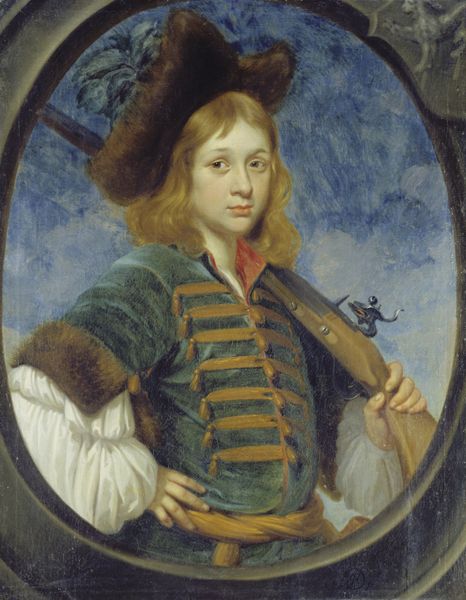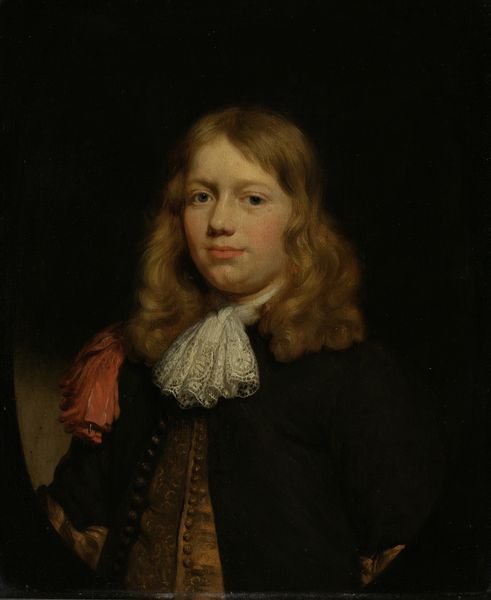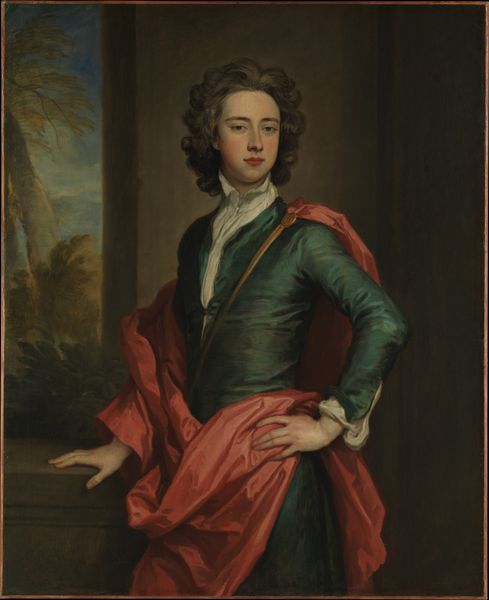
Portrait of Prince William Henry, Duke of Gloucester 1754
0:00
0:00
jeanetienneliotard
Royal Collection (Buckingham Palace), London, UK
pastel
#
neoclacissism
#
self-portrait
#
pastel
#
history-painting
Copyright: Public domain
Editor: This is Jean-Étienne Liotard's pastel portrait of Prince William Henry, Duke of Gloucester, created in 1754. There’s something so delicate and almost haunting about it, like a porcelain doll. What’s your take on it? Curator: This piece presents us with an interesting intersection of power and representation. We see a young royal rendered with remarkable softness, a choice that complicates traditional notions of masculinity and authority during the 18th century. Editor: Interesting. So the medium itself, pastel, contributes to that softness? Curator: Absolutely. The powdery texture softens the sitter's features, pushing against the expectations of a strong, virile prince. It almost hints at the constructed nature of power, doesn't it? Were Prince William Henry a woman, what message would this impart, and how would it be received? Editor: It's as if Liotard is showing us the vulnerability behind the royal facade, and forcing us to reckon with gender expectations. Is it unusual for male members of royalty at this time to be portrayed with a softer palette or medium? Curator: The context is crucial. This softness could reflect the changing aesthetic tastes moving towards the Rococo, but also opens up a discussion around the performance of masculinity. It raises questions of what’s being emphasized and what’s being concealed. To add, this allows discourse surrounding who has access and freedom in representation and how wealth factors into portraiture and representation in the art world. Editor: I never considered how much the pastels can highlight gender expectations in a work of art, it really emphasizes who this royal member is, but also can shed a light on wealth. Curator: It's these complexities and visual details that make the work such a fertile ground for analysis. We see here both artistry, historical record and questions surrounding power. Editor: I am seeing something new, as an art piece, a historical piece and also a sociological document.
Comments
No comments
Be the first to comment and join the conversation on the ultimate creative platform.
